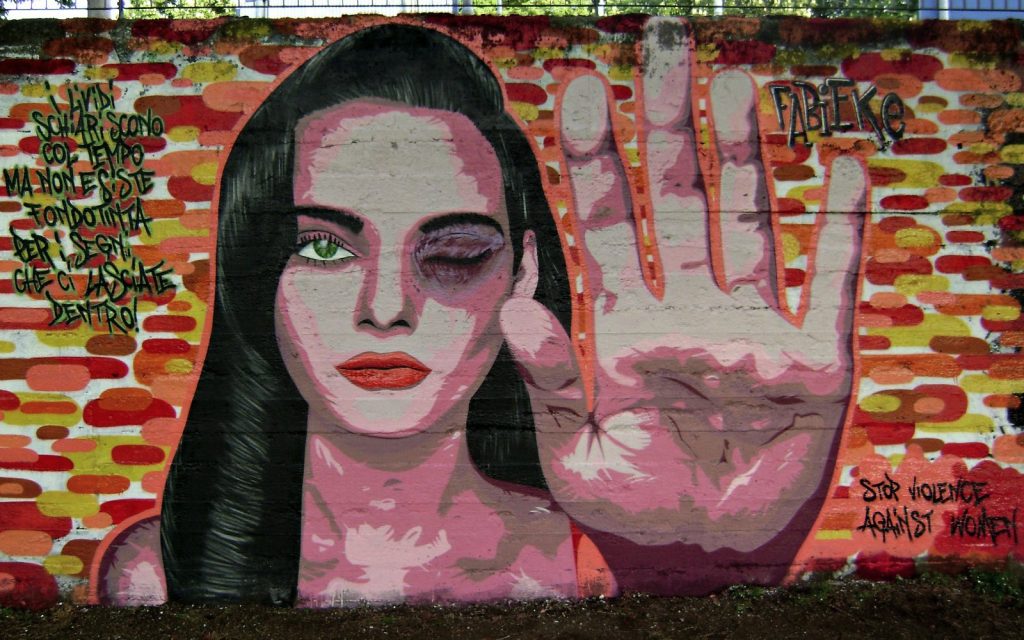Violence against women hasn’t only been prevalent throughout history, for the longest time, it was encouraged for specific circumstances.
However, the fact remains that this violence is a heightened behavior, motivated by factors and supported by social structures that malign women in a variety of subtle ways.
The differences between men and women in terms of power, both physical and social, isn’t lost on anyone. As a man, I have to admit that I don’t feel the effects of patriarchy as strongly as women do, and that makes me feel conscious about writing about a topic that is as sensitive as this one.
Ancient and Medieval Times
Rape culture isn’t only real, it stretches back to ancient times. The Hammurabic Code of Babylon, written over 4000 years ago, states that if a married woman was raped, she would share the punishment with the perpetrator. The punishment in this case being bound and thrown into the river.
Greek myths have multiple instances of women being raped. However, the case of Medusa is noteworthy as she is blamed by Athena for being raped in her temple by Poseidon.
As punishment, she turned Medusa’s hair into snakes, and making her face so hideous that if anyone looked at her, they would turn into stone.
According to early Roman law, a woman was deemed to be the property of her husband. A man could beat, divorce or even murder his wife for a variety of offenses. Later on, the Catholic Church endorsed men as being the judges of their wife, encouraging them to beat them for committing an offense. Beating one’s wife was considered to be a display of concern for her soul.
Although rape has been recognized as a crime since ancient times, often it was rarely bought forward for prosecution due to the stigma. Medieval theologian Thomas Aquinas argued that rape, although a grave offense, was less sinful than masturbation, as rape still fulfilled the procreative function of intercourse, while the latter did not.
For a period of time, the phrase ‘rule of thumb’ was thought to have originated from the English common law, which allowed men to beat their wives as long as they used a stick that’s no longer than their thumbs. This attribution, however, is erroneous. It is derived from a caricature in the 18th century where Francis Buller, nicknamed ‘Judge Thumb’ was said to allow the above mentioned practice of beating wives with small sticks.
It wasn’t until the 1870s in America that men were forbidden to beat their families.
The cultural history of violence against women in the Indian subcontinent has an added layer, in the form of dowry violence and honor killings. A Telegraph article in 2013 claimed that a woman was killed every hour for dowry in India, because her family failed to meet the lavish demands for gifts from her in laws.
From Nineteenth Century to Modern Times
Over time, the legal definition of what constitutes rape has changed, as women have battled to gain greater recognition and retribution for their abuse. Successful conviction in nineteenth century America required women to prove conclusively that they had been violently abused and they had tried to resist as much as possible, both verbally and physically. In those days, consent once given wasn’t considered to be revocable, and white men were rarely convicted, with the jury tending towards punishing black perpetrators.
Feminists started fighting back against the status quo in the mid nineteenth century, fighting to include a range of non consensual acts with acquaintances and husbands as rape. Suffragettes in early twentieth century fought to raise the age of consent from 10 to between 14 and 18, also forcing passing of statutory rape laws that didn’t require evidence of force and resistance.
From the sixties onward, black feminists fought for the recognition of abuse against African American women. Feminists also fought against the notion that only strangers could rape women, exploring instances of date rape as well as abuse within families.
The enmeshed patriarchal system has not only propagated many of these problematic views, it still acts as a significant barrier against further progressive change. In the Middle East, Africa and the Indian subcontinent, cultural artifacts present additional complications.
It’s a long drawn out struggle that shows little signs of any end, but thankfully, progress continues to be made.
This article is the second part of a series of articles called Blurred Lines, that explores the historical and cultural landscape of abuse and harassment, and what we can do to change the narrative. You can find the first article here.
